‘Shackle and Hoist’ Horror: The Hidden Cost of Cheap Kosher Beef
In July 2016, eyewitnesses from PETA and Animals Now (Israel) traveled to South America to expose one of the cruelest industrial cattle slaughter methods in the world. It’s known as “shackle and hoist.”
“The shackling and hoisting shown in this video is a violation of all industry and international welfare guidelines.” —Dr. Temple Grandin, renowned animal-welfare expert
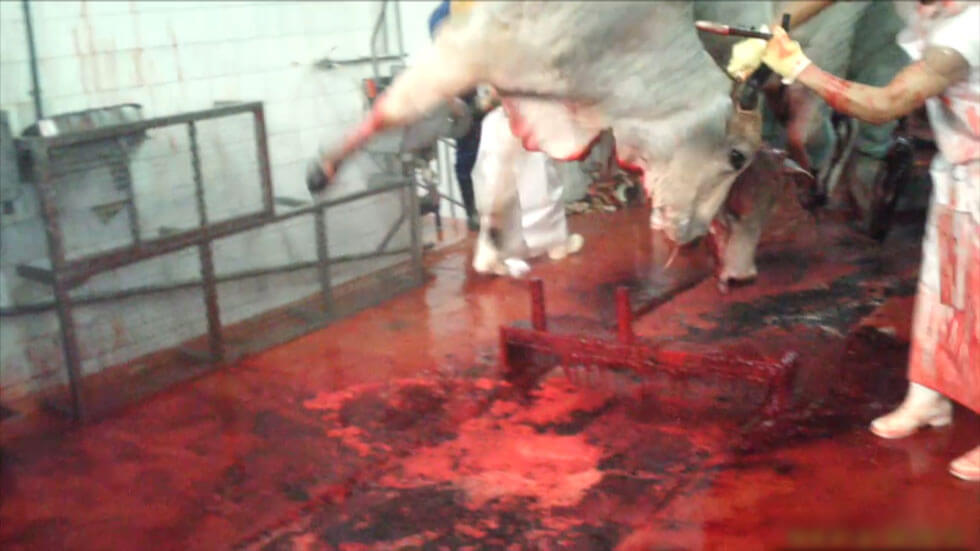
Historic Victory: Following Israel’s Example, U.S. Kosher Authority Bans ‘Shackle and Hoist’ Slaughter
In July 2018, the largest U.S. kosher certifier announced that it would no longer accept meat slaughtered with the “shackle and hoist” method. The Orthodox Union (O.U.) told JTA that it “expects that all slaughterhouses certified by the O.U. will stop the practice by the end of September.” The O.U. said that about one-third of the kosher beef that it certifies for import into the U.S. comes from South America—where PETA has conducted three investigations into “shackle and hoist” slaughter.
This announcement follows a momentous change to Israel’s regulations in May 2017, after a joint eyewitness investigation and campaign by PETA, Animals Now (Israel), and Let the Animals Live (Israel). Israel announced that effective immediately, no new slaughterhouses would be approved for export to Israel unless they conducted slaughter procedures using rotating restraint pens. For facilities already exporting beef to the country, it set a deadline of June 1, 2018, for the installation of rotating pens, after which “shackle and hoist” meat would be completely banned.
Tons of Pain
PETA eyewitnesses went into Frigochaco, a slaughterhouse in Paraguay that ships up to 700 metric tons per month of kosher beef to Israel. Paraguay is the seventh-largest exporter of beef in the world and supplies 40 percent of all the kosher beef eaten in Israel. Teams of kosher slaughterers are sent from Israel to South America.
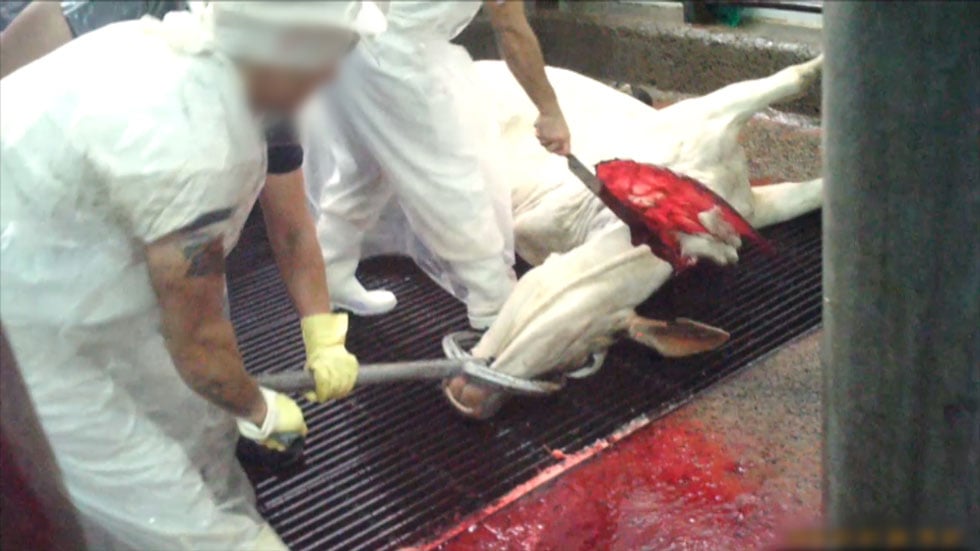
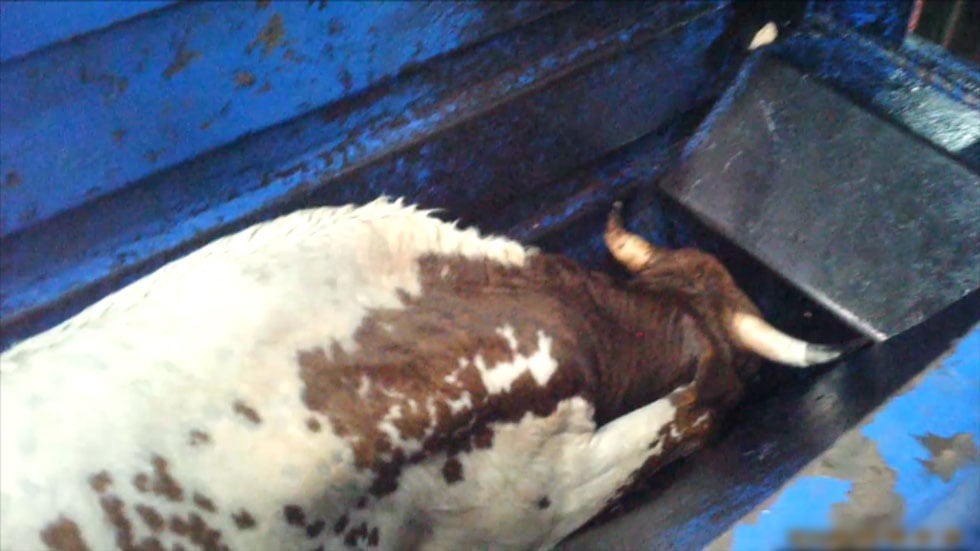
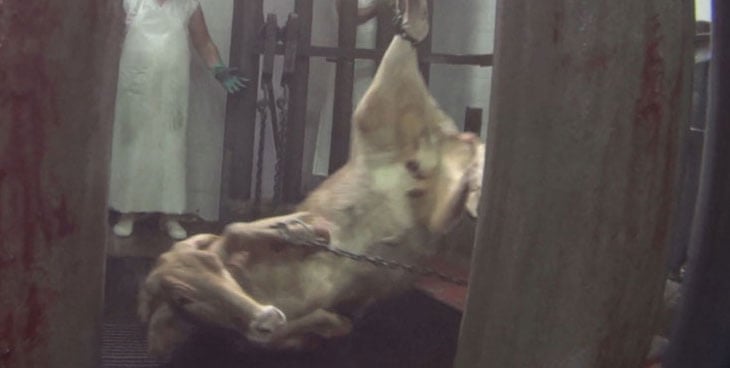
Workers restrained cows with a sharp tool called a “devil’s fork” and by hooking them by the nose. After workers wrenched the cows’ heads back, the slaughterer cut the throats of the completely conscious animals, causing their blood to spurt out. After reviewing the footage, Dr. Grandin said, “The highly stressful cruel methods of restraint must be eliminated.”

Even after the cows’ throats were cut open, the worst was still to come. Many of the cows remained conscious and struggled and flailed as they were hoisted up in the air and moved down the processing line. Hanging by one leg, these cows were still fully conscious while bleeding out, some for over two minutes.
“These plants must also stop hanging fully conscious cattle on the rail.” —Dr. Temple Grandin
But workers started cutting into them, even though they could still feel pain.
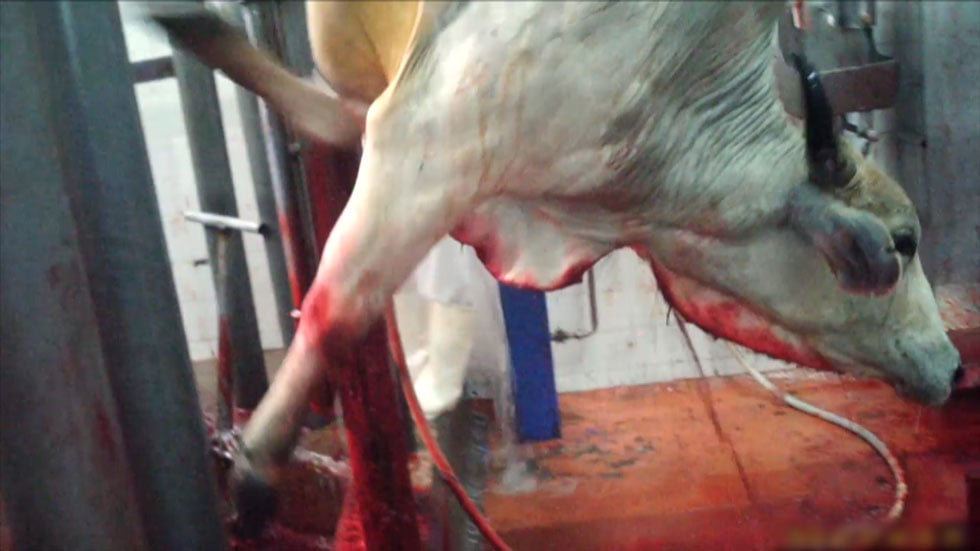
Many cows like this one remained alive and fully conscious as a worker cut open their skin and drove a spike called a “puntilla” into their spines to paralyze them before other workers started to dismember them.
“A puntilla was used to sever the spinal cord before dressing. This does NOT make the animal unconscious. The head can remain conscious after the spine is severed.” —Dr. Temple Grandin

PETA and Animals Now also obtained whistleblower footage from slaughterhouses in Argentina and Uruguay and another large slaughterhouse in Paraguay, all of which use this archaic method. The following are some of the tools of this cruel trade:
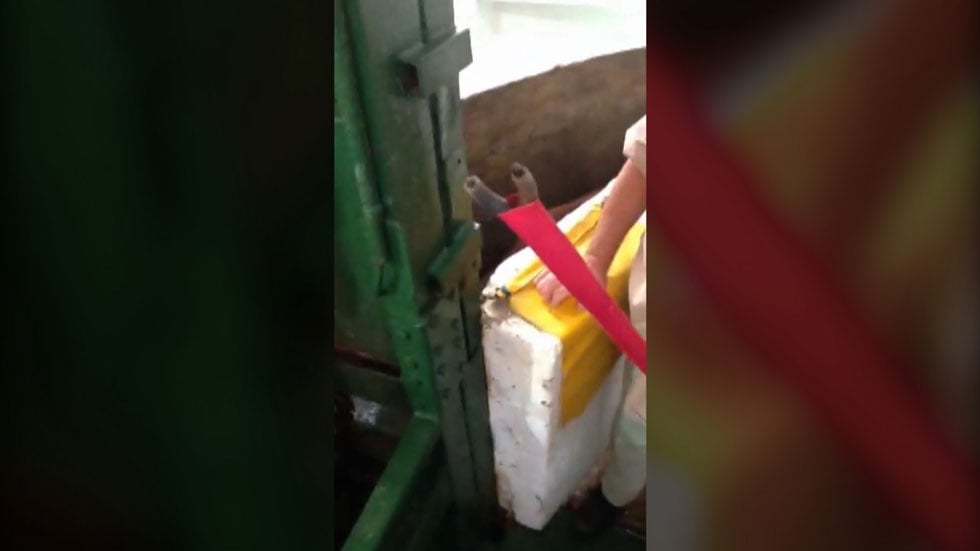
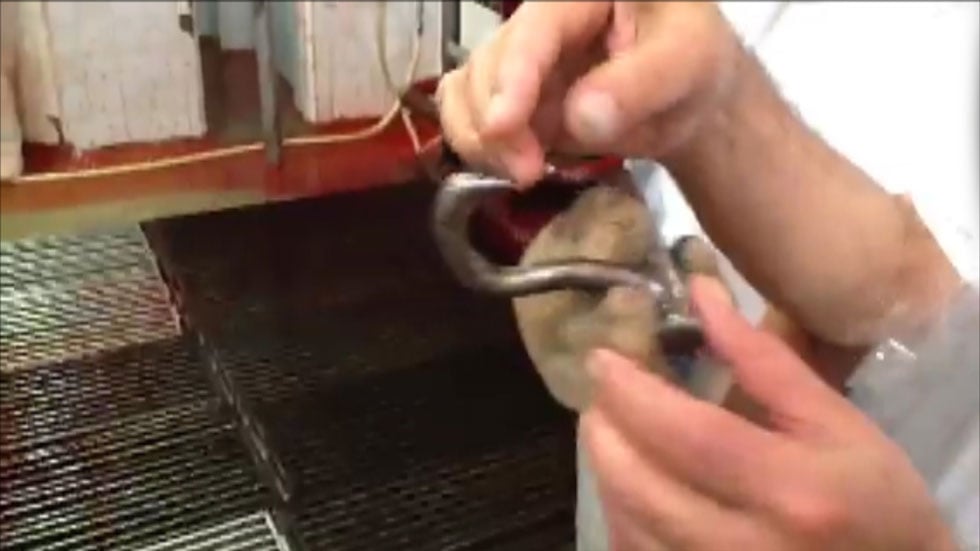
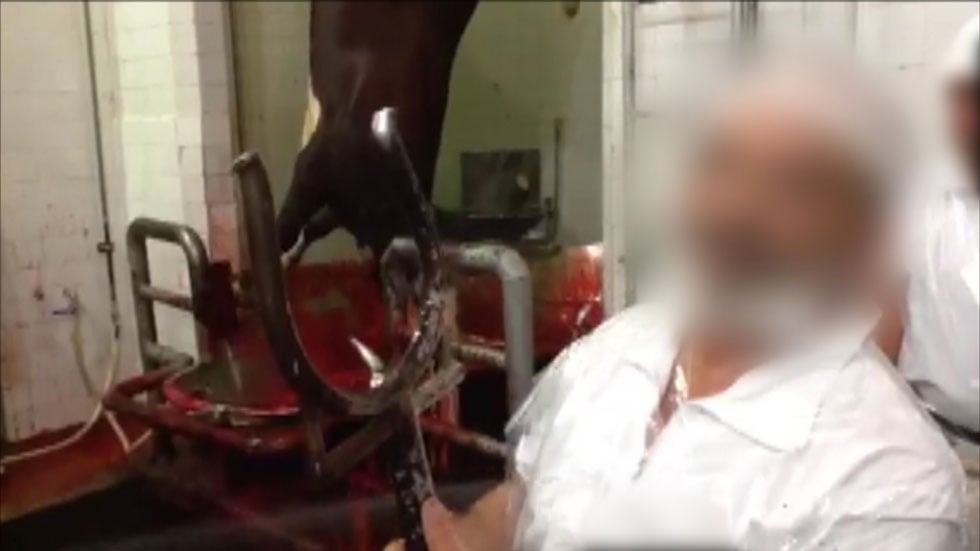
What Rabbis Say
Shockingly, representatives of the office of the chief rabbi of Israel previously defended the kosher status of “shackle and hoist” beef, reportedly declaring that “gratuitous cruelty” does not “disqualify the meat” as kosher.
However, many other rabbis across the spectrum have spoken out against “shackle and hoist” slaughter, citing Jewish laws and principles, especially tsaar baalei chayim—not causing unnecessary harm to animals:
“It is hard to reconcile the humane slaughter that kashrut is meant to represent with this barbaric practice.” —Rabbi Shmuly Yanklowitz, president and dean at Valley Beit Midrash
“[T]he restraint methods used in South American kosher slaughter are the most crude and abusive in the commercial kosher slaughter industry.” —Rabbi Adam Frank, Masorti Congregation Moreshet Yisrael
“We have good evidence that shackling and hoisting animals while still conscious causes immense pain to the animals themselves. … Especially since a much less painful alternative is available for kosher slaughter, shackling and hoisting them unquestionably constitutes a violation of Jewish laws that forbid us to cause undue pain to animals.” —Rabbis Elliot N. Dorff and Joel Roth, the Committee on Jewish Law and Standards of the Rabbinical Assembly
Shekels, Lies, and Videotape
Following a series of previous PETA investigations into kosher slaughterhouses in Uruguay, the chief rabbi of Israel promised to phase out “shackle and hoist” slaughter and declare the meat to be “non-kosher”:
“Rabbinate to Phase Out ‘Shackle and Hoist’ Animal Slaughter” —Jerusalem Post
“Israel’s Chief Rabbi to Mark Imported Beef Unkosher if Slaughtering Process Not Changed” —Haaretz
But as this new video has exposed, these promises have not been kept. Sixty to 80 percent of the beef exported to Israel is still produced using “shackle and hoist” slaughter. So why does the Chief Rabbinate of Israel continue to certify such a primitive and cruel practice when there are other methods of kosher slaughter that use more modern equipment and cause less suffering? “Shackle and hoist” slaughter only persists because it’s faster and cheaper to disregard animal welfare.
This carefully calculated cruelty allows slaughterhouses to kill more than 90 cows per hour. “Shackle and hoist” slaughter is almost twice as fast as less agonizing methods. This is the hidden cost of cheap kosher meat. The cows are paying the price.

You Can Help Cows
When businesses use animals to make a profit, they always suffer. The best way to help cows is to stop eating their flesh and drinking their milk. Thanks to delicious vegan alternatives, including many certified kosher brands like Gardein, Sophie’s Kitchen, Tofurky, and Lightlife, it’s never been easier to replace meat and dairy in everyday cooking. We have plenty of resources to help you go vegan, so take the pledge today!
